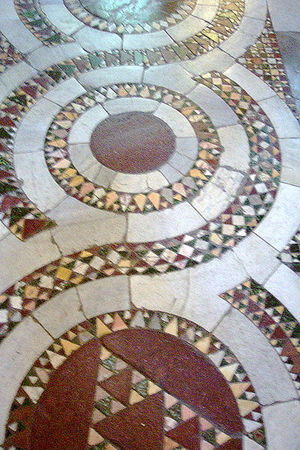Most people think growing their own bananas is a long difficult process that takes years to learn and years for the plants to grow and maybe produce fruit. Nothing is further from the truth.
Dwarf varieties grow about 5-6 feet tall, and do well in containers both indoors and outdoors. They are grown around the world in every conceivable climate. The premiere banana growers club is bananas.org. They boast 1,086 members from Ontario Canada to Southern Africa and on every continent. Members can not only learn about growing special varieties of bananas, they can swap plants as well.
Regular varieties of bananas can grow over 20 feet tall, so check to see if your landscape will handle a plant that tall.
Bananas are easily grown in containers. Even the tallest of varieties can be started in containers from seed or pups (more about them later). The soil mix I use is one third each of topsoil, peat and compost. They truly aren’t very picky plants. Other growers use commercially prepared all-purpose potting soil; the plants grow well in that too. If the bananas are going to be taken inside, the commercial potting soil is lighter in weight and easier to move.
I grow two Musa Acuminata (Dwarf Cavendish) in 12″ containers in my back yard. They will grow to a height of 5-7 feet total. Cavendish is the most commonly grown banana and is the variety found in grocery stores.
Heat isn’t as bad for bananas as one might think. This year Bexar County and most of Texas has had a record number (55 days and counting) of 100+ degree heat. I give about 1″ of water a day in the morning and the plants are not only doing fine, they’re growing quite well. Both my plants are producing pups; I’ll have to ask at church and neighbors to see who wants to adopt them. I know I’ll have no trouble there.
In the spring, both plants will be placed in 18 gallon utility tubs (aka muck buckets) with holes drilled in the bottom. The same mix will be used as before. I’ll get to taste my first home grown bananas soon.
A general garden all purpose vegetable fertilizer is given once every 3 months.
For winter care, check the forecast. If a freeze is predicted, the containers can be brought in side for the night, or moved into a greenhouse. If moving the containers isn’t feasible, cover with blankets for protection. Insert sticks into the container to keep the blankets from weighing down the plant. Never cover a plant with plastic- the freezing weather is transmitted to the plant.
Some growers will cut the plant down to about 3-4 feet then cover for protection. These will grow back in the spring.
Planting a variety that is known to be cold hardy like Musa Basjoo is also a great help. This variety grows as far north as Ontario, Canada. My winters are never that cold.
Growing in the ground
This is the easiest method to grow bananas. Choose your perfect spot in your landscape. Select the variety you want to grow and make sure the sun or shade requirements are met, provide good well drained soil and plant. In about 9 months you’ll have bananas on most plants.
Fertilizing is the same as the container plants. Bananas aren’t really picky. I wouldn’t choose a high concentrated fertilizer and use it every month- that would overload the plant and possibly kill it.
Watering your bananas
Now this is easy. One grower in Ecuador waters twice a day in the summer; he has to deal with 120 degree heat.
Provide drainage for your plants, whether in the ground or especially in containers. Unless the plant is sitting in a bog, you really can’t overwater a banana. If the leaves droop, water it. Don’t wait until this happens, though. You do want to have a well hydrated plant that produces fruit. A stressed plant won’t.
Diseases and bugs
Of all the plants that have been “munched” by bugs this year, meaning almost every plant, bush and tree I have, the bananas have been left alone. It appears the grasshoppers can’t handle the leaves. Yipee! Bees do seem to like the plants; I’ll be happy about that when the flowers come to bloom and I get fruit.
There are, however, nematodes (parasitic worms that attack the roots) and a few pests overseas that do attack bananas. There are also a number of fungi and viruses that attack banana plants.
Good housekeeping (keeping all dead plant material) picked up around the plant, keeping a watchful eye on the leaves and education to learn what the signs are and how to treat them will ensure healthy plants.
Propagating bananas
Remember I mentioned “pups” earlier? That’s the term given to banana shoots. Bananas can be grown from seed, but the corm (the main root) of the banana produces shoots of new bananas.
The pups should have thin, sword like leaves for the first three feet of their growth. If they have broad leaves like the parent plant, they are water shoots and should be taken out. These will never produce fruit. (If you have a friend or neighbor who wants a tropical plant with no fruit, separate it and plant it like a pup). The water shoots, if left alone will drain the parent plant of nutrients.
In the spring, take the banana plant out of its container or for an in ground plant, use a shovel. Cut a wedge into the corm around the pup about a 45 degree angle. Do not try to cut to the middle of the corm on the parent plant.
Replace the soil around the in ground parent or replant the container parent. Plant the pups in a container with good soil and keep moist and out of direct sun for a few days. The leaves will droop and look sorry for a few days; this is normal.
You don’t have to let any banana plant produce pups. You can take them off and the parent plant will produce more fruit. I plan to harvest pups every other year.
Uses for banana leaves
There’s more to the humble banana plant than just the delicious fruit. The leaves have been put to use all over the world.
The most common use is as a dinner plate. Imagine having an outdoor luncheon with garden fresh fruit and veggies with banana leaves as plates. Easy cleanup!
In many countries the leaves are used for cooking. The leaf is used as a wrap for meat or rice (a unique flavor is imparted to the dish), then steamed, boiled or fried. Even Hawaiian cooking uses banana leaves. Trout, pork and chicken have unique flavors (all good) when wrapped and steamed in banana leaves.
Banana leaves have been found to contain a large amount of polyphenols- the substances in plants beneficial to human health and EGCG, the substance found in green tea.
I have found no evidence of the leaves themselves being edible or drinks being made from them.
Banana leaves in crafts
The uses do keep mounting, don’t they? Banana leaves can be woven into baskets, glued to paper and used as picture frames. Fibers harvested from the main plant are also used to make mats and unique baskets sold all over the world.
There is a beautiful “cat cave” basket available online at Meijer.com made from banana leaf fibers.



